Back of Knee Pain Felt Like It Popped
Medically reviewed by Dr. Chaminda Goonetilleke, 30th Nov. 2021
Pain on the inside of the knee is known as medial knee pain. Injuries which occur suddenly, often as result of sudden trauma are known as acute injuries. Chronic knee injuries occur gradually, often from overuse.
Click on the headings below to expand:
Acute knee injuries (sudden onset)
Acute knee pain is usually sudden onset and includes sprains, strains & fractures:
Medial knee ligament sprain (MCL sprain)
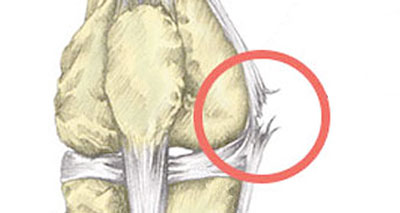
An MCL sprain is a tear to the ligament on the inside of the knee joint. MCL stands for medial collateral ligament. It is caused either by a direct impact to the outside of the knee or from twisting. Symptoms include:
- Sudden onset pain located on the inside of the knee.
- Rapid swelling.
- A positive result for valgus stress test.
- Often they occur in conjunction with an anterior cruciate ligament (ACL) tear. Or with a meniscus tear.
- More on MCL sprain
Medial meniscus injury (torn cartilage)
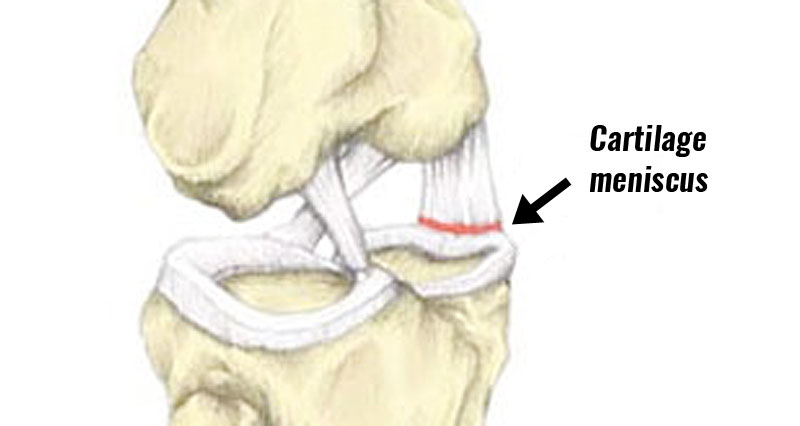
A torn meniscus is a tear of the semi-circular cartilage in the knee joint. It is commonly injured through direct impact in contact sports or from twisting your knee.
However, it can also occur in older athletes through gradual degeneration. Symptoms include:
- Pain on the inside of the knee which may occur suddenly, but can also develop gradually.
- Your will usually feel pain when fully bending your knee, or squatting down.
- You may have swelling on the inside of your knee, but not always.
- Your knee may also lock or give way.
- It will feel tender when pressing in along the joint line on the inside of your knee.
- More on torn cartilage
Gradual onset medial knee pain
Gradual onset or chronic knee pain develops over time. You will probably not be able to pinpoint the exact time your injury occured. Overuse is a likely cause, resulting in wear and tear or degeneration.
Chronic medial knee pain can also develop following an acute injury which is not treated properly. As a result, it fails to heal properly.
Patellofemoral pain
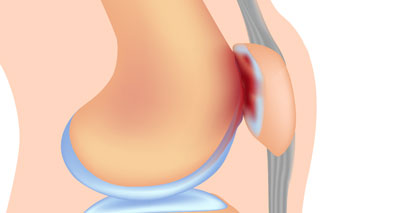
Patellofemoral Pain Syndrome (PFPS) is a generic term used to describe pain at the front of the knee, specifically around the patella (kneecap). Symptoms include:
- An aching pain in the knee joint, particularly at the front of your knee, around and under the patella.
- You may have tenderness along the inside border of your kneecap.
- Swelling will likely occur, particularly after exercise.
- Patellofemoral pain is often worse when walking up and down hills, or sitting for long periods of time.
- More on Patellofemoral pain syndrome
Synovial plica
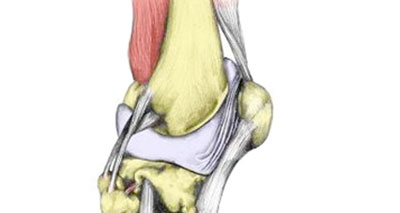
A synovial plica is a fold in the synovial membrane which encloses the knee joint. The plica is found along the inside of the kneecap. Symptoms are similar to patellofemoral pain syndrome:
- Pain and discomfort on the inside of your knee.
- A sharp pain at the front inside edge of your patella.
- You will likely feel a sharp pain when squatting.
- A synovial plica may sometimes feel like a thickened band of tissue under the inside of your kneecap.
- More on Synovial plica

Pes anserine bursitis/tendinopathy
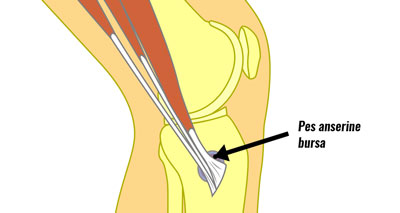
This is a less common causes of pain on the inside of the knee. The pes anserine is the point on the inside of the knee where the tendons of three muscles combine and insert.
- Pes Anserine Tendonitis is often difficult to distinguish from a medial ligament injury.
- Symptoms are similar and both are likely to be painful when stressing the inside of your knee.
- More on Pes anserine bursitis/tendinopathy
Osteoarthritis of the knee
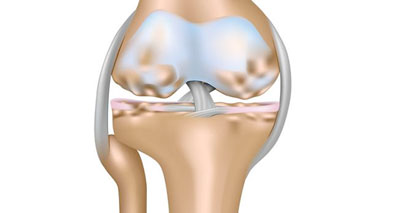
Osteoarthritis is a common cause of knee pain and usually affects people over fifty years old. It occurs when cartilage which protects the bones degenerates. Symptoms include:
- Knee pain which develops gradually over time.
- Initially, thie may be a deep, aching pain in the inner knee.
- Pain is worse after exercise.
- You are likely to have stiffness and sometimes swelling in the joint.
- Sometimes a clicking or cracking noises are heard when moving your knee.
- More on Osteoarthritis of the knee
Referred knee pain
Pain on the inside of the knee can result from injuries or conditions elsewhere in the body. In particular, the hip and lower back. The sciatic nerve gets pinched or compressed, resulting in pain which radiates down the leg.
- Read more on sciatica.
Not sure what is causing medial knee pain?
Try our sports injury symptom checker. Simply select the symptoms which apply to you to view relevant injuries and conditions.
- Symptom Checker
Rehabilitation programs
We have the following rehab programs available on our injury rehabilitation app:
ACL Sprain
Full rehabilitation program
This is a full step-by-step criteria-based rehab program for ACL sprain or anterior cruciate ligament sprain. Created by England Rugby Team Consultant Physio Phil Pask.


MCL Sprain
Full rehabilitation program
This is a full step-by-step criteria-based rehab & strengthening program for Medial knee ligament sprain. Created by England Rugby Team Consultant Physio Phil Pask.


VMO Knee Strengthening
Full rehabilitation program
A full step-by-step criteria-based strengthening program targeting the Vastus medialis oblique muscle. Created by elite -evel football Physio Paul Tanner.


Knee Taping
Video tutorials
Simple sports taping techniques for a variety of knee injuries as demonstrated by Senior sports physiotherapist Neal Reynolds

Download the Sportsinjuryclinic.net
Sports Injury Rehabilitation App
Our step by step rehabilitation programs take you from initial injury to full fitness.
Start now for free:



Learn more…
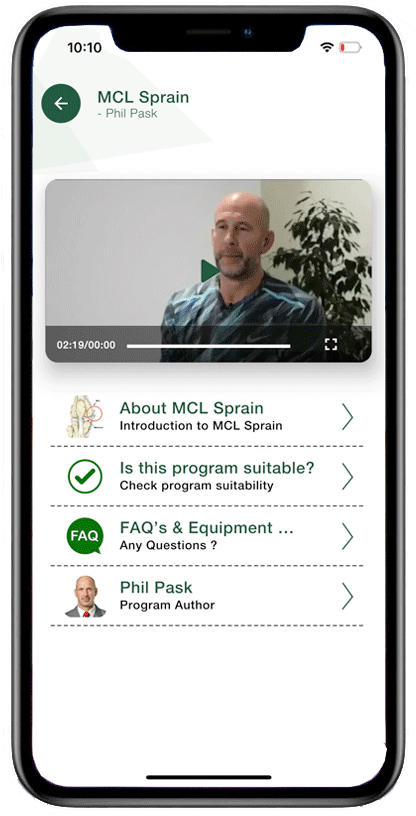
Recommended products
We recommend the following products to help treat knee ligament injuries
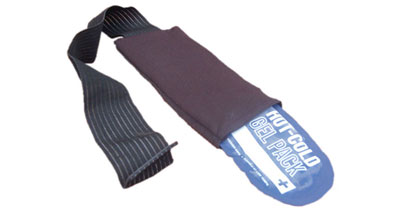
Cold compresion wrap
A cold therapy and compression wrap is essential first aid. It reduces pain and swelling, and can also be used to apply heat later in the rehabilitation program.

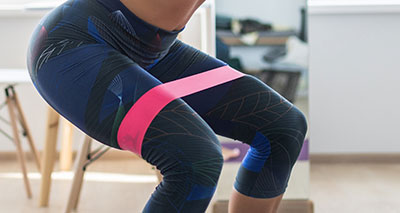
Resistance bands
Resistance bands are important for most sports rehabilitation. They enable you to exercise any muscle from the comfort of your own home.

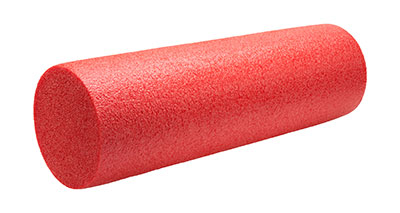
Foam roller
A foam roller is an excellent piece of kit which can be used in place of massage to treat calf injuries. They are also excellent when use regularly as part of your warm up to help prevent future injury and improve performance.

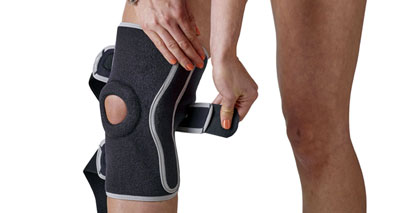
Hinged knee brace
A hinged knee brace protects the joint and helps reduce any swelling. It has solid metal supports down the sides to prevent sideways movement of the joint. Grade 2 or 3 injuries may require a limited motion hinged knee brace.

Back of Knee Pain Felt Like It Popped
Source: https://www.sportsinjuryclinic.net/sport-injuries/knee-pain/medial-knee-pain